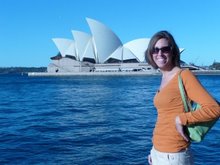1940 – 1950
In September 1944, Reverend Andrés Mazak, a Slovakian missionary from the
The family of Eduardo Costa and Mrs. Adelo Noguera de Costa, long-time members of the
The Reverend Hugo Kummer, Lutheran pastor of the Evangelical German Church, felt bad that he was not able to pastorally serve the many Lutherans with whom he had a good relationship and who relied on him for special services.
Moreover, there was a woman named Vilma de Grach, married to Mr. Miguel Grach, a Roman Catholic, who wanted to have

The Reverend Kummer wrote an official letter from his congregation to the United Evangelical Lutheran Churchs in Argentina (IELU), offering both the use of its sanctuary and the willing collaboration of its members. The letter was received by IELU Vice President Rev. H. D. Hammer, who presided over the Commission of Church and Evangelism, the organization responsible for opening new projects. The Commission approved the opening of a center in
After a period of preparation, the Reverend Jonás Villaverde, President of the IELU in
The IELU was not able to send a permanent pastor to
1950 – 1960
A Catechism class, formed by Teresita and Juan Grach and Gisela Hari, began in 1950. In May 1952 Reform Sunday was chosen as the date for the first Confirmation service.
At the beginning of September 1952, the Reverend Paul Benson and his wife, Mrs. Elba, sent by the National Lutheran Council that August, began to work under the direction of Pastor Hammer. But the President of Argentina, J.D. Perón, closed the border between
The Reverend Benson decided to move Church services from the
In 1953, at the recommendation of Pastor Benson and Mr. Eduardo Costa, the National Lutheran Council bought a piece of property on the corner of Av. 8 de Octubre 3449 and Carlos Crocker 2561.
In August 1955, Pastor Hammer, backed by Mr. Adolfo Wolf, published the first issue of the monthly bulletin—an eight-page document called “The Lutheran Beacon.” Mr. Wolf was an enthusiastic collaborator.
On July 3, 1955, Pastor Hammer and his wife donated a beautiful communion set in memory of the Pastor’s mother, Mrs. Bertha A. Hammer. The community dedicated the gift to the glory of Christ.
In May 1955, the community consecrated and dedicated a bronze tray for receiving offerings. The tray was a donation from Pastor Hammer in memory of his father.
In December 1955, the community consecrated four cedar pews, donated by Mr. Eduardo Costa.
In 1958, Mrs. Margarita de Frey donated lace to Mrs. Herminia de Peri, who donated it to the Congregation. Mrs. Lidia de Ludzcanoff donated the material, and these two women together made a beautiful mantel for the altar. Mrs. De Frey was Roman Catholic, and Mrs. De Ludzcanoff Orthodox.
1960 – 1970
In October 1962, Mrs. Vilma de Polis donated a beautiful mantel to cover the Communion service. It was consecrated in the Service of Holy Communion on Sunday the 11th.
Beginning at this time, North American missionaries began to arrive from the
In 1966 the Congregation founded the Evangelical Institute, later named the Ecumenical Lutheran Center (CLE), which moved into its own building in 1968.
1970 – 1990
At the beginning of 1975, the
As recently as 1988, the Evangelical Lutheran Church of America and the IELU came to an agreement in which the Congregation of “Nuestro Salvador” was brought into the IELU, with the vision of integrating the CLE into the IELU, as well.
The Congregation was formally created within the IELU in 1989, and the CLE put under the administration of the IELU on March 15, 1991.
In that same year, 1989, Pastor Augusto Fernandez Arlt was installed as incumbent pastor of the Congregation. He served until the end of 1991.
The situation in the Congregation at that time was the following: around 25 families had become affiliated with the Congregation; the Congregation had a Counsel of Directors; and a bi-monthly bulletin, “Vinculos,” meaning “Bonds,” was published to share the Congregation’s activities. The Congregation was by then a part of the IELU, based in
1990 – present
On July 12, 1992, Pastor Raúl Estéban Denuncio was installed as incumbent pastor of “Nuestro Salvador” and Director of the CLE. During this period the Congregation strengthened its ecumenical bonds and founded The Counsel of Christian Churches in
In August 1994, the Congregation founded the Mission San Juan in
In 2001, the congregation of “Nuestro Salvador” moved its activities into its current building on Avenue 8 de Octubre 3324.
In December 2004, Pastor Denuncio retired from “Nuestro Salvador” and Pastor Wilma Rommel received a call from the Congregation to serve as pastor.
In October 2005, Pastor Rommel was installed as incumbent pastor of “Nuestro Salvador.”
In April 2006, the Congregation formed a Bible Study group of twelve people in Jaureguiberry. In that same month, the Congregation also created a program for Christian education for youth and re-opened the Mission San Juan at the request of residents in El Cerro,
In May 2006, the Congregation came into contact with
In September 2006, the Congregation received Meredith Johnson as a volunteer to collaborate in various Church projects.
In December 2006, the Congregation celebrated Christmas with children’s pageants, both in the Mission San Juan and in “Nuestro Salvador.”
In February 2007, the first meeting of sister Churches “Nuestro Salvador” and Good Shepherd took place in
At this time, there are about 80 people who participate in the life of the Church, including worship services, activities in Jaureguiberry, and activities in Mission San Juan.



1 comment:
Thanks for the history of Nuestro Salvador. It is interesting to see the struggles, striving and successes. It reminds me of Isaiah 42:8 - a bruised reed He will not break and and a dimly burning wick He will not quench. I pray the seeds that have been sown will continue to produce good fruit in the Kingdom of God.
Post a Comment